I’ve read this tip on another blog, but the blog seems to be gone. I’ve used this kind of drawsting closure on two Edwardian petticoats already, and it really works. It’s easy and fast to make and to put on, and it helps to give the skirt the right Edwardian silhouette.
Edwardian skirts and petticoats have either an inverted pleat at the back or gathers. Edwardian petticoats often have gathers.
You’ll need a petticoat which will be finished with a drawstring channel with bias tape or a facing. The top of the facing is already stitched down, while the botton is not yet stitched down. With the centre back of the petticoat facing towards you, measure the amount of fabric you’ve added for the pleat or gathers at the back. Pierce the fabric there with an awl. For example: you’ve added 10 cm to the back pattern piece of your skirt. Then pierce the fabric 10cm left and right from the centre back seam, so the two eyelets are 20 cm apart. To make things even more confusing: 😉 The eyelets don’t have to be exactly 20 cm apart, you could make them closer or further away from the centre back seam.
When you’ve pierced the fabric (just the petticoat fabric, not the facing) …
… sew the eyelets.
Make two drawstrings about as long as half the waist measurement of the skirt inclusive the amount for the back gathers. Don’t make or use drawstrings that are too wide: they’ll need to go easily through the eyelets.
Thread the drawstings through the eyelets, and cross them as in the picture. The part of the drawstrings which now lies above the skirt will be hidden inside the drawstring casing later. Stitched the marked ends of the drawsting down inside the drawstring casing.
Then stitch down the bottom of the drawstring channel.
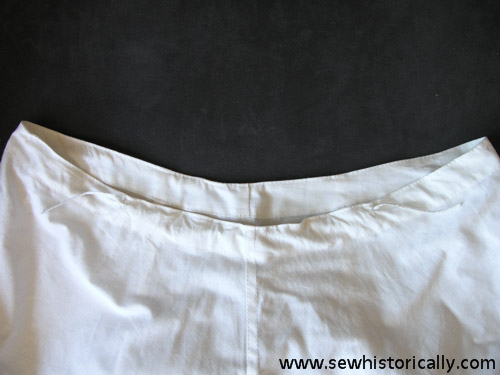
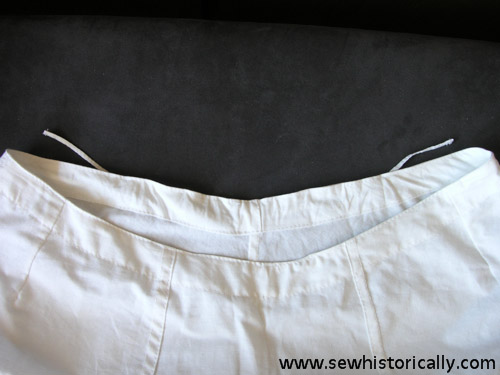
Now, when you put on your petticoat and draw at the strings …
your petticoat will mostly gather at the back between the eyelets.
Tie a bow with the drawstrings.

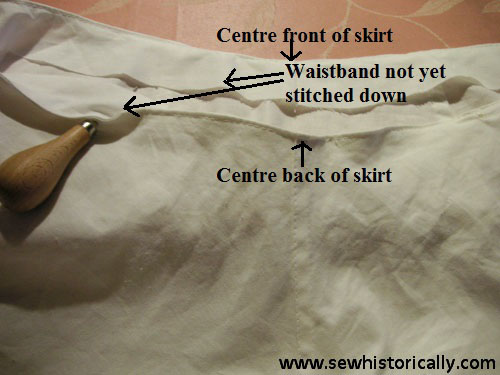
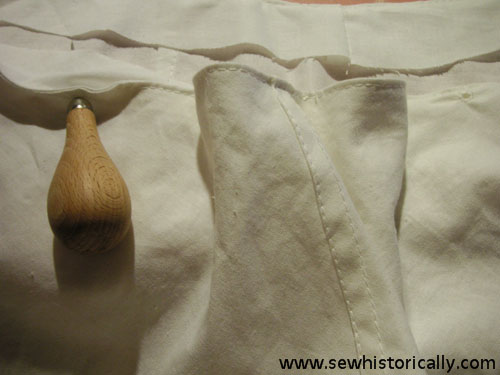



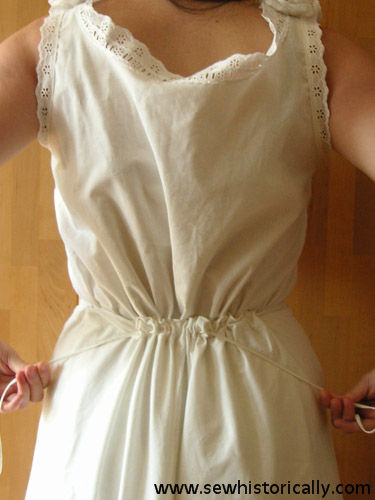
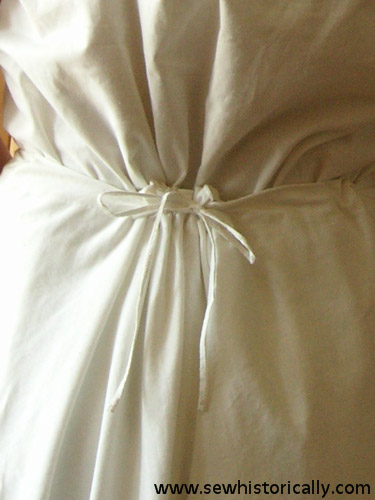
can I know more about the cross over process of the tie? does the cross go over happen on the front?
The ties start at the sides of the petticoat and cross over at the back between the two eyelets. Hope this helps! 🙂